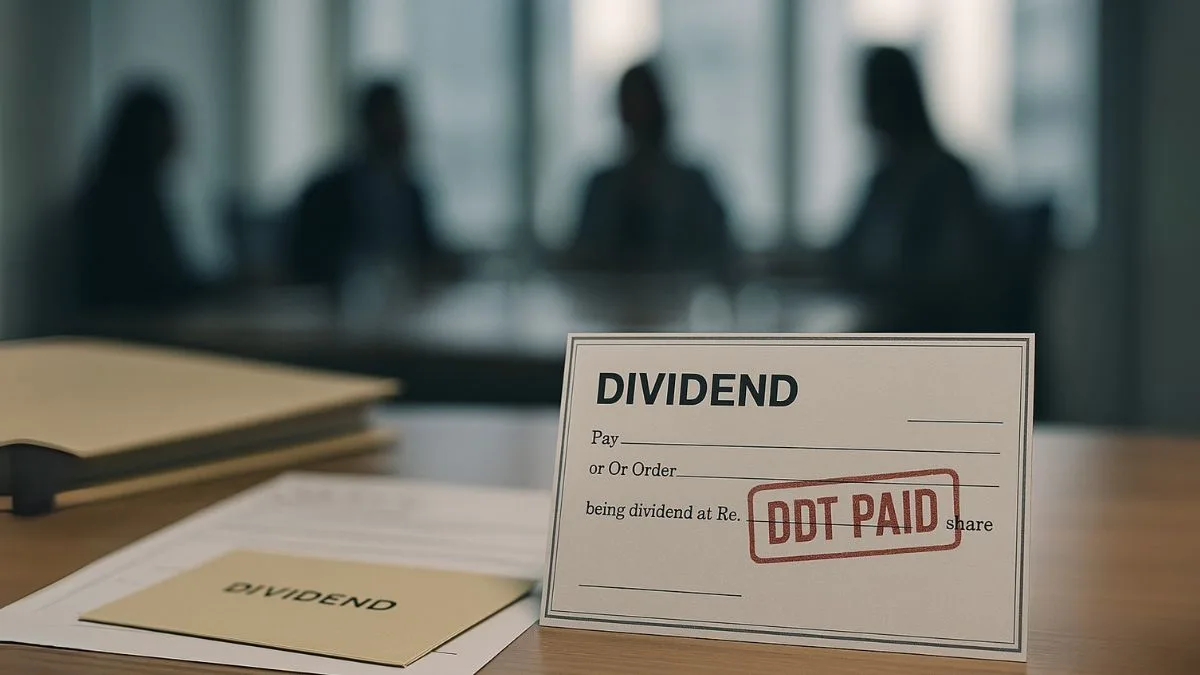
Owning property jointly is quite common in India, especially among families, business partners, and investors. However, when multiple individuals own a single property, the question arises: how will the rental income or deemed income from such property be taxed? To answer this, the legislature introduced Section 26 of Income Tax Act.
This section provides clarity on the tax treatment of property owned by co-owners. It ensures fairness by dividing the income according to each person’s share, rather than taxing the group as a whole. For taxpayers, this is a significant relief, as it prevents confusion & avoids double taxation.
What is Section 26 of the Income Tax Act?
Section 26 of Income Tax Act applies to situations where a house property is owned by two or more people. The section specifically states that:
- If the property owned by co-owners is clearly defined with definite and ascertainable shares, then the income from such property shall not be taxed as the income of an Association of Persons (AOP).
- Instead, the income will be divided among the co-owners based on their respective shares.
- Each co-owner is then required to include their portion in their income from house property & pay tax individually.
In simpler words, even though they co-own the property, they will not be taxed as a group."
Why Was Section 26 Introduced?
Before Section 26 was introduced, property jointly owned often created disputes. The tax authorities would attempt to treat the rental income as income of an “Association of Persons.” This meant higher tax burdens, because the AOP was taxed at the maximum marginal rate in some cases.
To remove this unfairness, Section 26 clarified that joint ownership does not automatically mean AOP taxation. Instead, each person’s share in the property is taxed in their hands.
Also Read: 5 Hidden Home Loan Tax Benefits Every Taxpayer Should Know
Rules for the Computation of Income from House Property
The rules for computation of income from house property under Section 26 are straightforward:
- Ascertain the Share of Each Co-Owner – If the ownership percentage is clearly mentioned (e.g., 50-50 between husband and wife), then that share will be used to compute the income division.
- Calculate Total Income from the Property – This includes rent received, municipal taxes paid, and deductions like 30% standard deduction and interest on home loan.
- Divide the Income According to Shares – After computing the net annual value, the amount is divided as per ownership ratios.
- Tax Individually – Each co-owner will show their portion of income under the head “Income from House Property” in their Income Tax Return (ITR).
Example to Understand Section 26
Imagine a house jointly owned by two brothers, Rahul and Mohit. Their ownership ratio is 60:40. The property is let out and generates an annual rent of ₹6,00,000.
- Municipal Taxes Paid: ₹50,000
- Net Annual Value: ₹5,50,000
- Less: 30% Standard Deduction: ₹1,65,000
- Net Income from House Property: ₹3,85,000
Now, under Section 26, the income will be split:
- Rahul’s share (60%) = ₹2,31,000
- Mohit’s share (40%) = ₹1,54,000
They will each include this income in their individual ITRs & be taxed as per their personal tax slabs."
Key Features of Section 26
- Applies only to property owned by co-owners with definite & ascertainable shares.
- If the ownership ratio is not clearly defined, then the income may be assessed as AOP income.
- Even though they co-own the property, they will not be taxed as a group if ownership shares are clear.
- Helps prevent higher taxation under AOP provisions.
- Simplifies tax compliance for joint property holders, especially families.
Section 26 vs. Association of Persons (AOP)
The major difference lies in taxation:
- Under AOP rules, the income is taxed collectively in the hands of the association.
- Under Section 26 of Income Tax Act, the rules for the computation of income from house property ensure individual taxation for each co-owner.
This provision gives relief to genuine joint property holders, such as family members, spouses, or business partners.
Also Read: Claim Interest Deduction on Home Loans & Save Tax
Judicial Support for Section 26
Courts in India have consistently supported the view that income from property owned by co-owners should be divided individually, and not taxed as AOP income. The judiciary has clarified that joint ownership alone does not create an AOP unless there is an active business or common purpose involved.
Thus, Section 26 is not just statutory but also judicially approved.
Benefits of Section 26 for Taxpayers
- Fairness in Taxation – Each co-owner pays tax based on their income level.
- Avoids Double Taxation – Prevents the same income from being taxed in the hands of both co-owners and AOP.
- Encourages Property Co-Ownership – Families can comfortably invest together.
- Reduces Litigation – Provides clear rules for tax officers and taxpayers.
Challenges in Application
Despite its simplicity, Section 26 can sometimes lead to disputes:
- Unclear Ownership Shares – If the property documents do not specify the percentage of ownership, the Income Tax Department may try to tax as AOP.
- Loan Repayments – Deductions like interest on home loan must also be divided proportionately, which can cause confusion.
- Deemed Ownership Cases – In some cases, a person may be treated as the owner even without legal ownership, creating further complications.
Also Read: Maximize Your Home Loan Tax Benefits
Conclusion
Section 26 of Income Tax Act provides much-needed clarity in cases of joint ownership. It ensures that when a property owned by co-owners generates income, each person is taxed on their share. The section states clearly that even though they co-own the property, they will not be taxed as a group. Instead, the rules for the computation of income from house property ensure fair and individual taxation."
This not only simplifies compliance but also protects taxpayers from higher tax burdens. For families and investors holding property jointly, Section 26 is one of the most taxpayer-friendly provisions in the law.
👉 Want expert help in filing taxes on co-owned properties and maximizing your deductions? Visit Callmyca.com and let our professionals simplify your tax journey.











